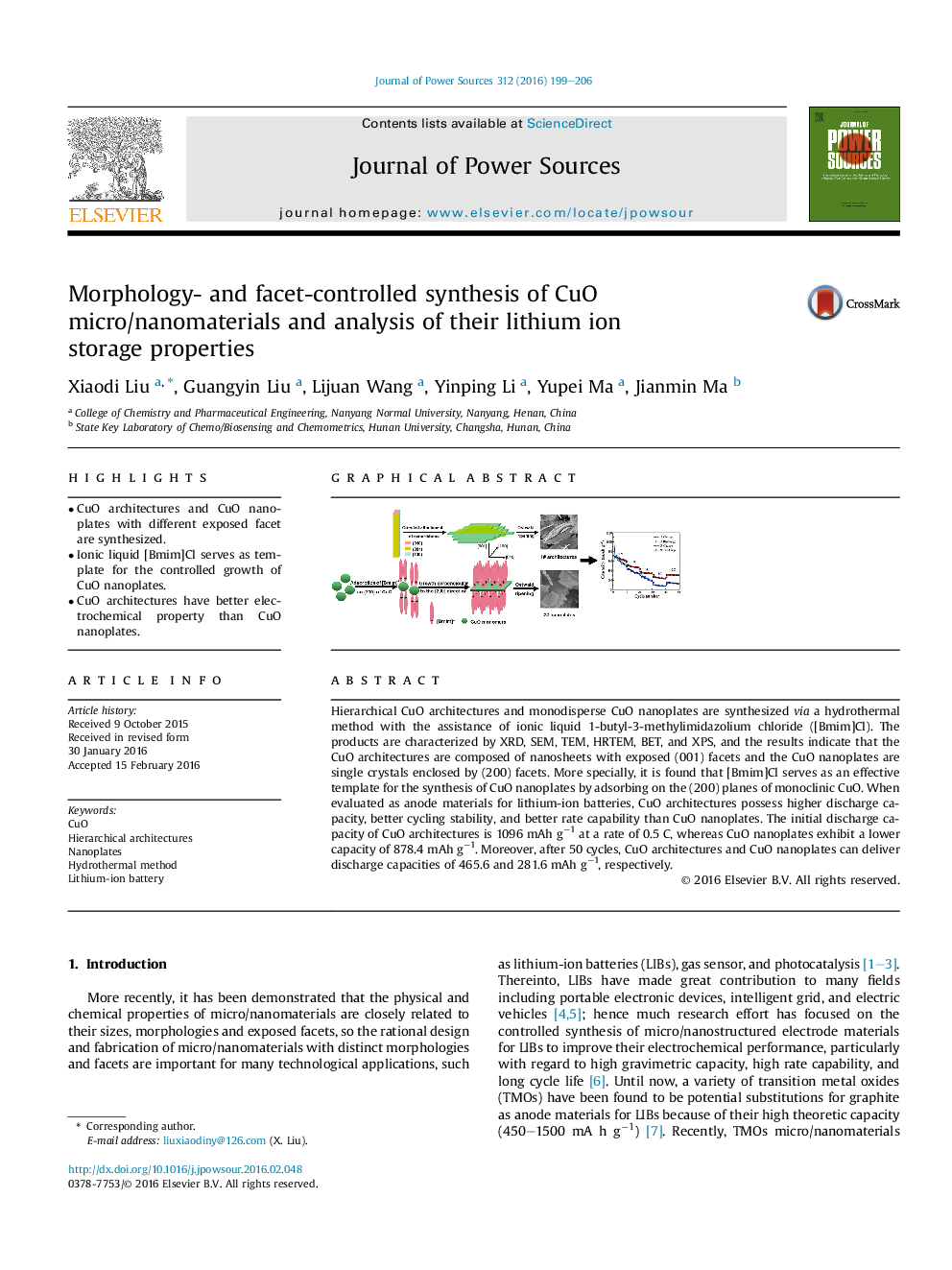| Article ID | Journal | Published Year | Pages | File Type |
|---|---|---|---|---|
| 1285455 | Journal of Power Sources | 2016 | 8 Pages |
•CuO architectures and CuO nanoplates with different exposed facet are synthesized.•Ionic liquid [Bmim]Cl serves as template for the controlled growth of CuO nanoplates.•CuO architectures have better electrochemical property than CuO nanoplates.
Hierarchical CuO architectures and monodisperse CuO nanoplates are synthesized via a hydrothermal method with the assistance of ionic liquid 1-butyl-3-methylimidazolium chloride ([Bmim]Cl). The products are characterized by XRD, SEM, TEM, HRTEM, BET, and XPS, and the results indicate that the CuO architectures are composed of nanosheets with exposed (001) facets and the CuO nanoplates are single crystals enclosed by (200) facets. More specially, it is found that [Bmim]Cl serves as an effective template for the synthesis of CuO nanoplates by adsorbing on the (200) planes of monoclinic CuO. When evaluated as anode materials for lithium-ion batteries, CuO architectures possess higher discharge capacity, better cycling stability, and better rate capability than CuO nanoplates. The initial discharge capacity of CuO architectures is 1096 mAh g−1 at a rate of 0.5 C, whereas CuO nanoplates exhibit a lower capacity of 878.4 mAh g−1. Moreover, after 50 cycles, CuO architectures and CuO nanoplates can deliver discharge capacities of 465.6 and 281.6 mAh g−1, respectively.
Graphical abstractFigure optionsDownload full-size imageDownload as PowerPoint slide
